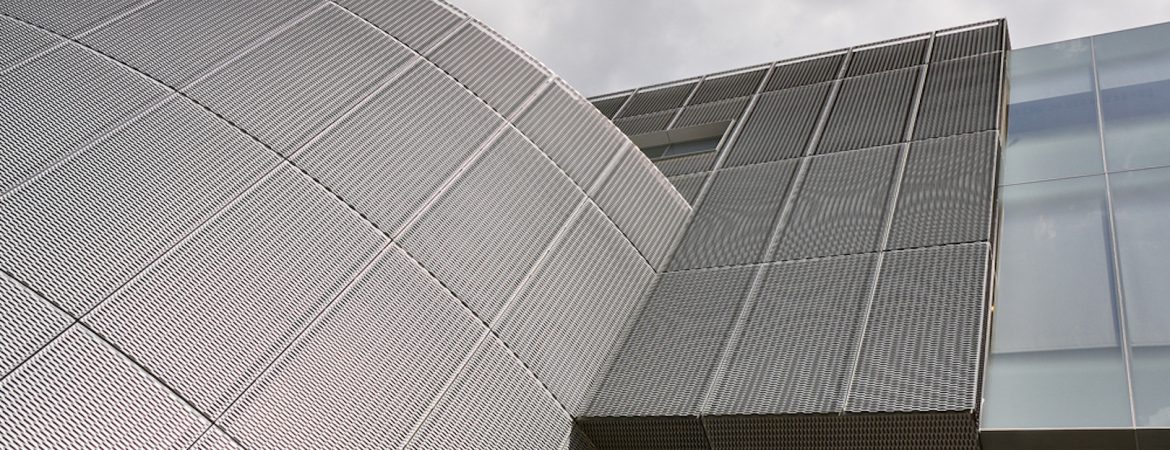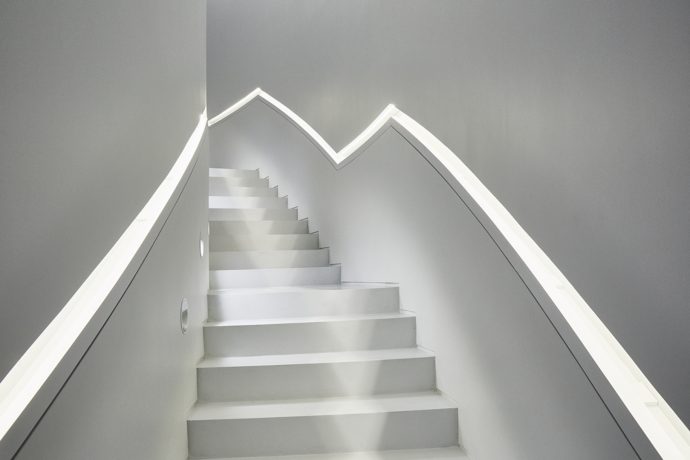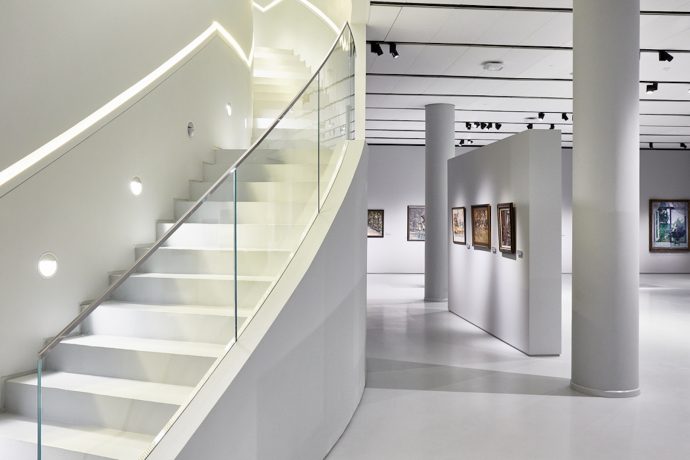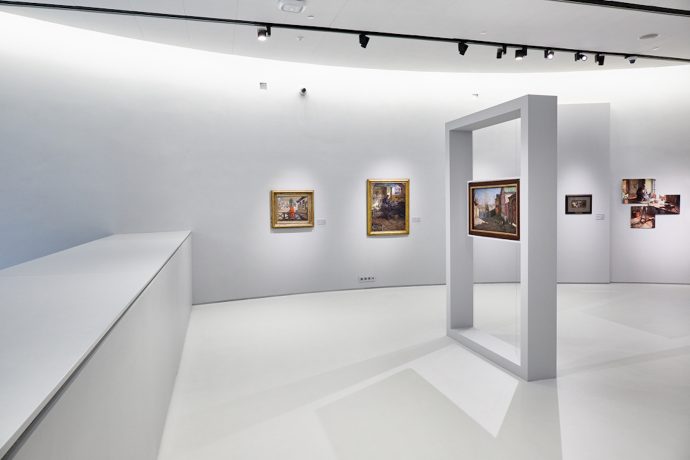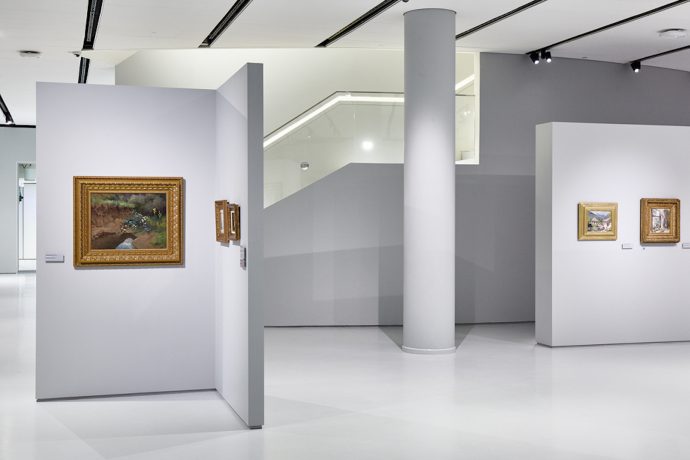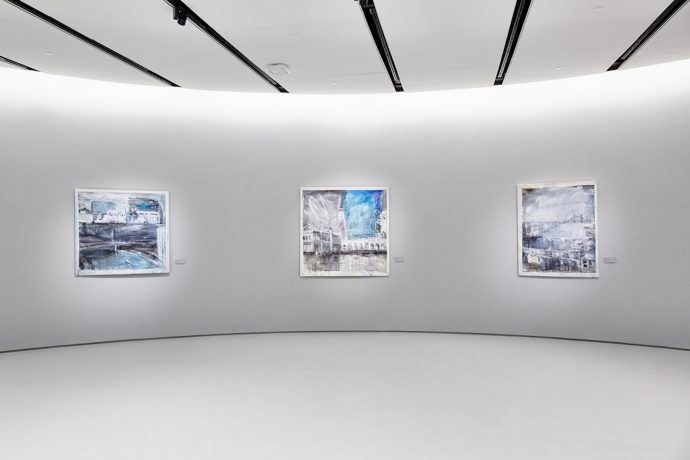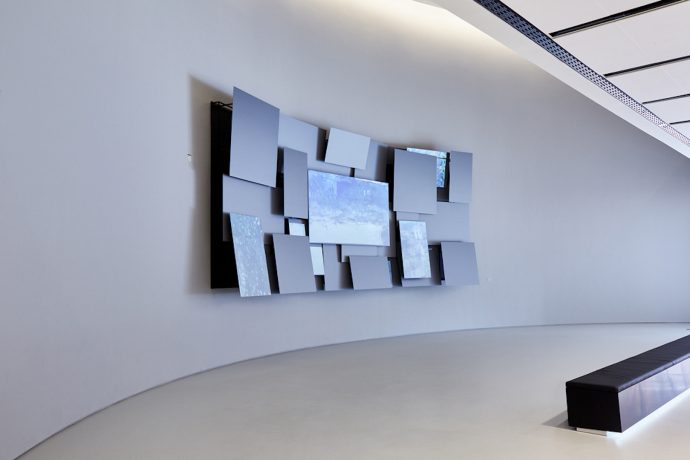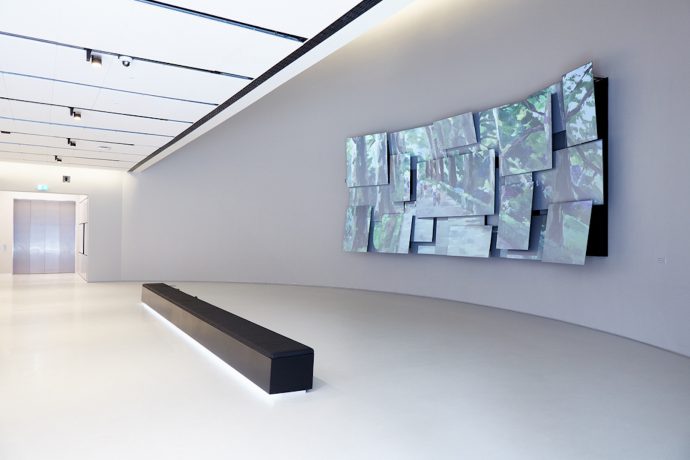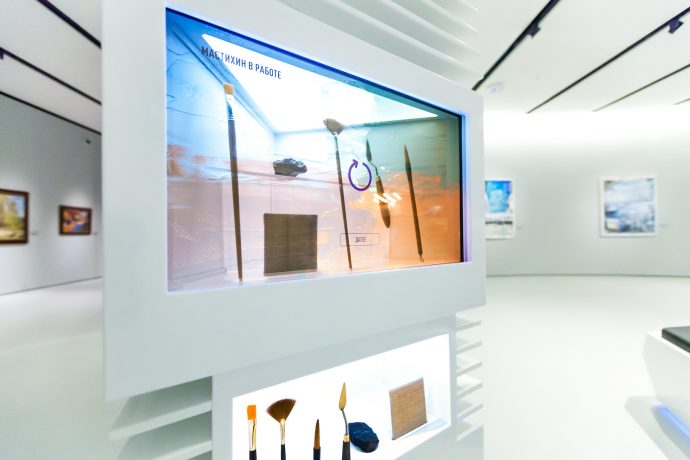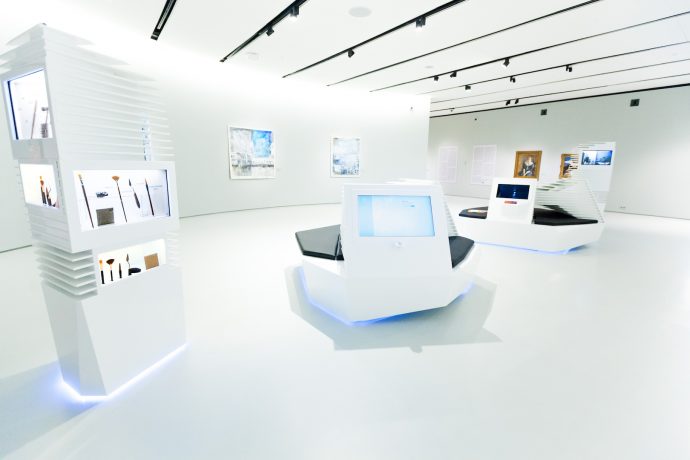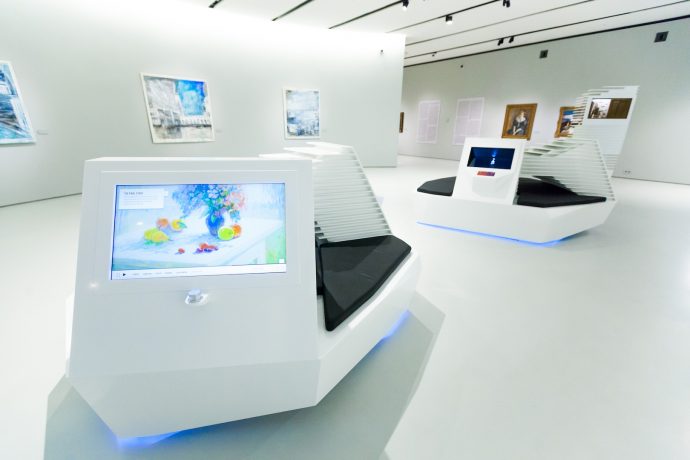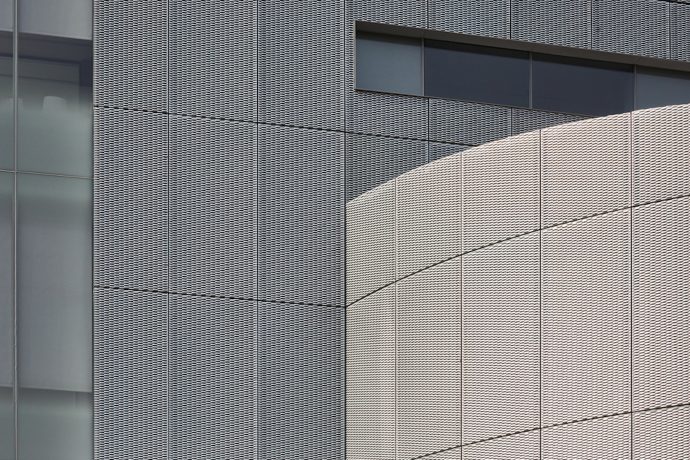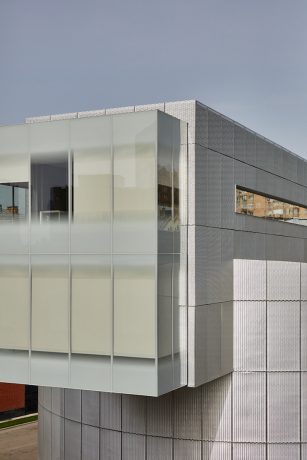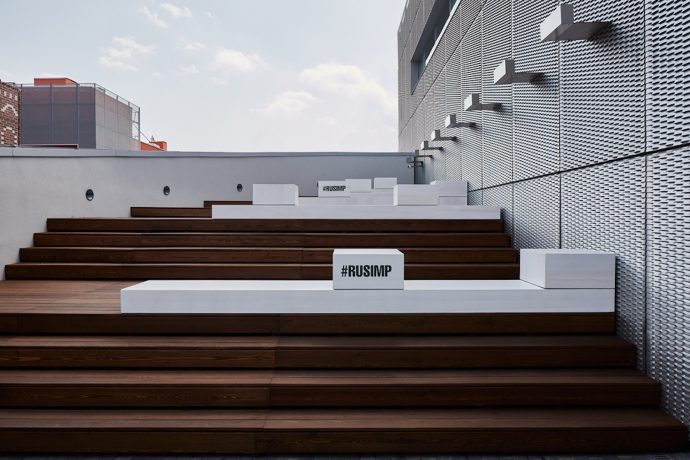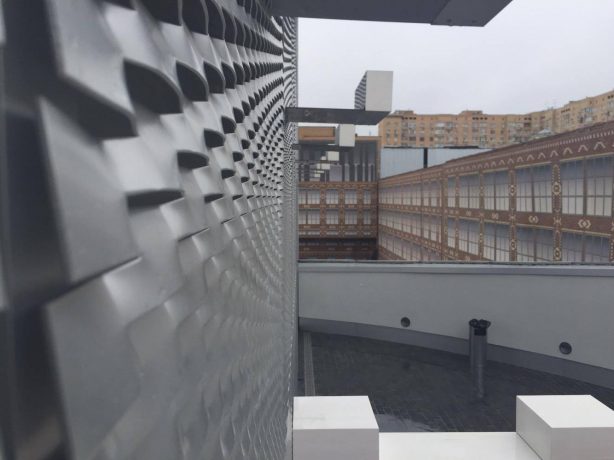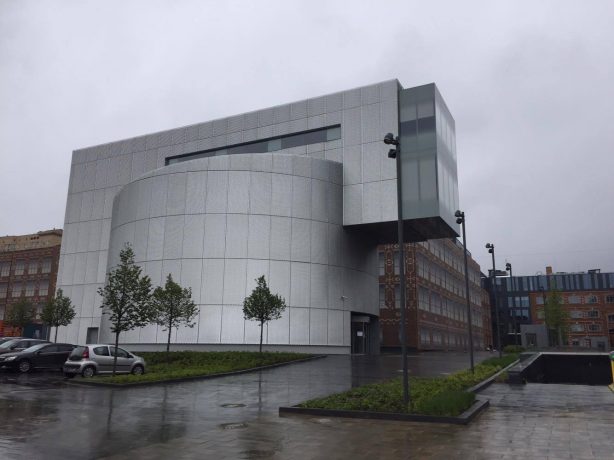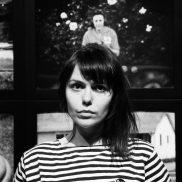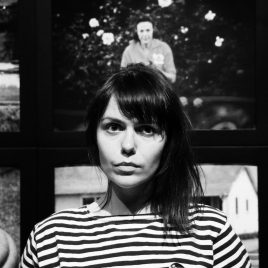What is the first thing that comes to your mind when you hear the word “impressionism”? Most likely, French artists who revolutionized art at the end of the 19th century... right? With very identifiable techniques, French artists created one of the most prominent art movements in opposition to conventional and conformist art scene. Presumably, striving for protest is what the impressionism is all about.
A bold statement by the founders and executive team of the Museum of Russian Impressionism is that Russian Impressionists contributed a lot to the development of the movement, and it is time to make their artworks accessible for broader audiences. The museum is located on the territory of what used to be a Bolshevik chocolate factory. This is not the only example when factories are being converted into cultural clusters, and there are plenty of them in Moscow. Most of the buildings are dated 19th century and represent the cultural and historical heritage of Moscow. We headed to the Museum of Russian Impressionism just 4 days after it opened. To get to the museum you have to pass by the chocolate store. Our advice – do stop by! There is nothing better than sweetening your art visit with some chocolate.
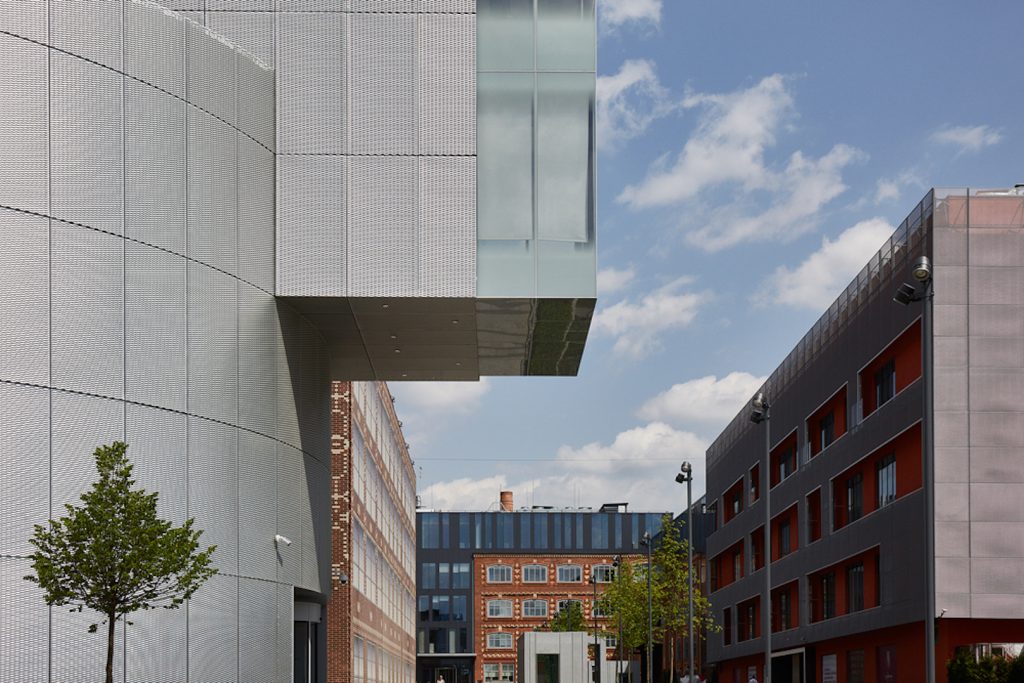
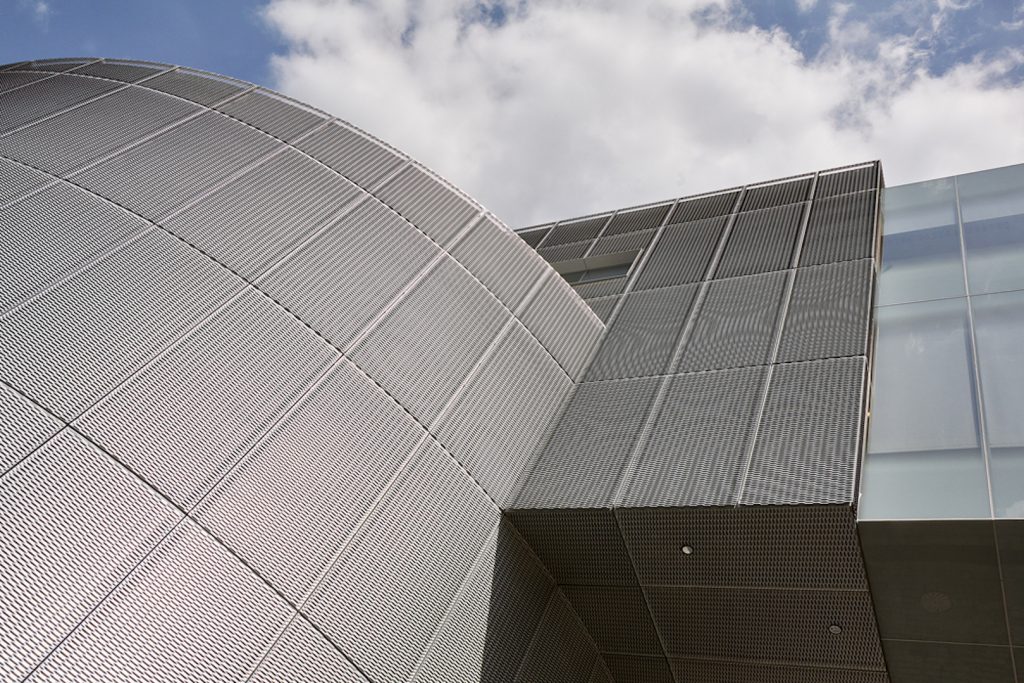
The building of the Museum of Russian Impressionism is impressive! It was designed by British architecture studio John McAslan + Partners. We bet you've heard this name before; the studio is known for its design project of the Royal British Columbia Museum, Birmingham Museum, National Galleries of Scotland, Natural History Museum in London and more. The list of their cultural projects is endless.
The newly opened museum doesn’t look big, but it actually features over 1,000 square meters of exhibition space. Most of this space is occupied by the permanent private collection. However, apart from the exhibitions, museum has a lot to offer: a multimedia space for lectures and screenings both in 2D and 3D, interactive zones with audio and visual guides, a café with delicious coffee and a cozy patio.
Ksenia Ilinykh, PR manager of the museum, welcomed us, gave a short tour and shared some interesting facts about the building. Curiously, what we didn’t know is that the building now occupied by the museum used to be a milling warehouse built in 1960s. The building was under a strict surveillance because the flour and sugar that was transported and stored in tended to explode.
“John McAlsan’s studio were given a carte blanche, they could do pretty much whatever they wanted. In the end, they decided to keep the historic building but redesign the façade and cover it with metallic sheets. With this design, Aidan Potter aimed at creating a dialogue between the past and the present, traditional and contemporary architecture”.
Indeed, the first thing that comes to mind when in the museum is the interplay between the exhibited artworks and minimalistic design, and how well the collection is integrated that it becomes part of the architecture.
Ksenia continues: “This building is a perfect fit for a museum as long as paintings do not need natural light. The museum has 3 main exhibition spaces. The permanent collection and the archive are located on the ground floor. The floor below will be used for the museum store primarily dedicated to books and publications on the history of art and impressionism”.
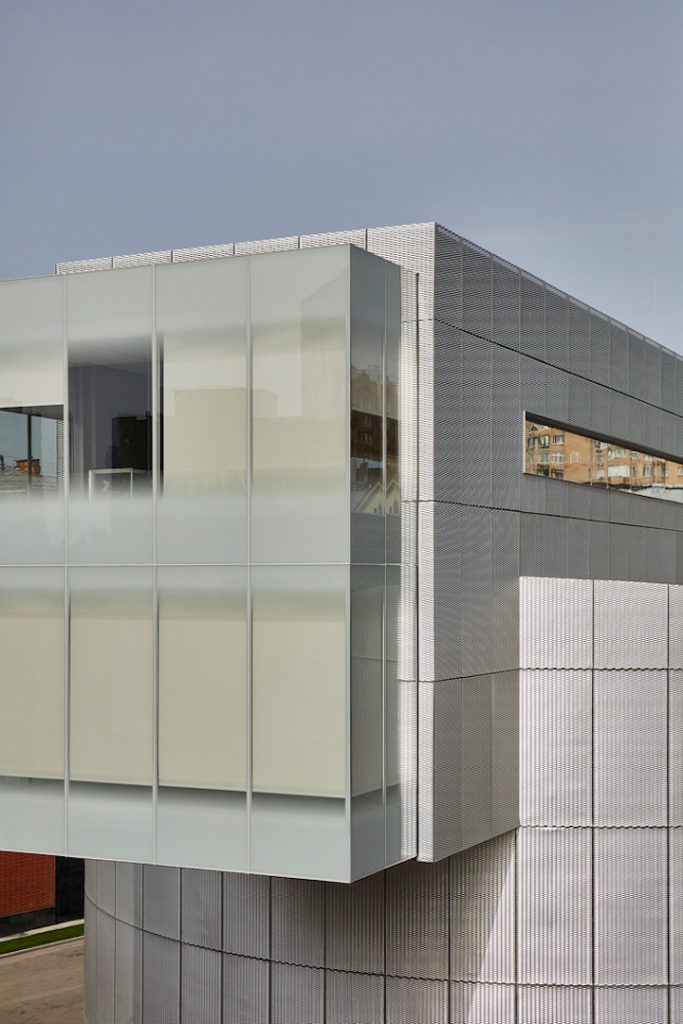
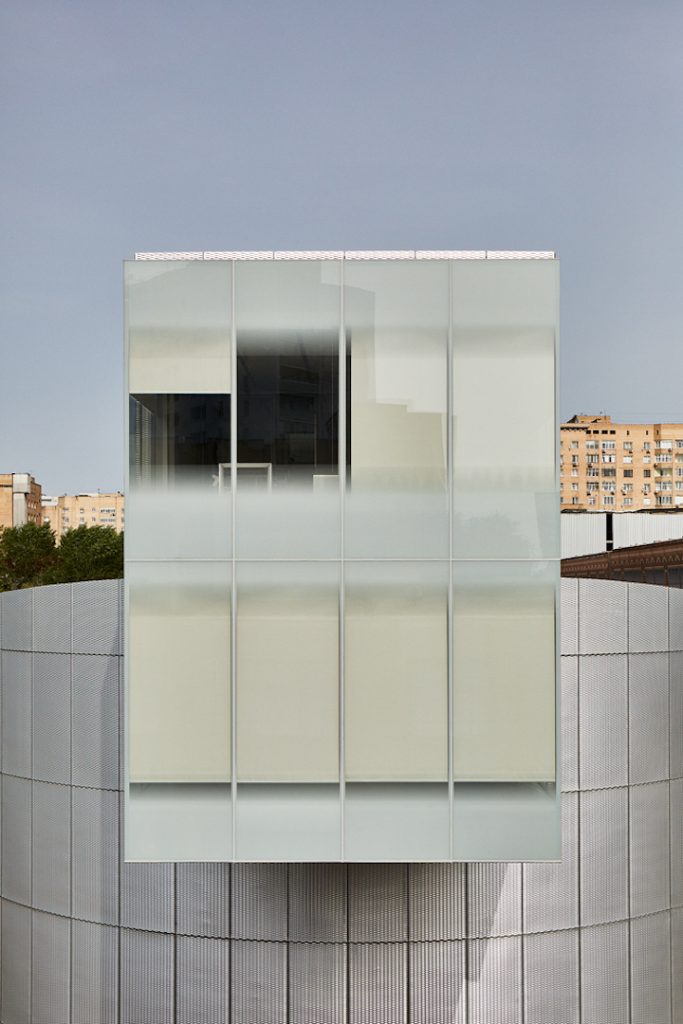
We walked from one hall to another, each connected with curved LED lighten stairs. We finished the tour on the ground floor and took time to contemplate on the media installation “Breathing Canvas” by Jean Christophe Couet. “Breathing Canvas” re-interprets and reinvents the techniques used by Impressionists through the use of visualization and animation. Applying most unconventional architecture decision to preserve aura of historic buildings, the Museum of Russian Impressionism is becoming a cultural and architectural landmark of Moscow.
